CONCEPTUAL APPROACH
The workshop includes an exercise exploring the tools and systematics of a circular economy.
This topic of circularity and sustainability in the building industry is becoming more and more relevant because of global warming. The role of the designer has a central position in determining and designing with circular and sustainable materials. This is internationally reinforced by the commitment made in The Paris Climate Agreement.
The respective exercise focuses on an urban phenomenon in which the rapid expansion of the city dominates previous development. It concerns former industrial districts that have already become part of the urban landscape. The former identity of these industrial districts has a legacy in which the industrial building with its characteristic concrete and brickwork emerges.
These former industrial buildings should be incorporated into the uses of the urban environment. It must have the capacity to take on different uses and scales. Added to this is the new evolution in which the circularity of the development is central to the design.
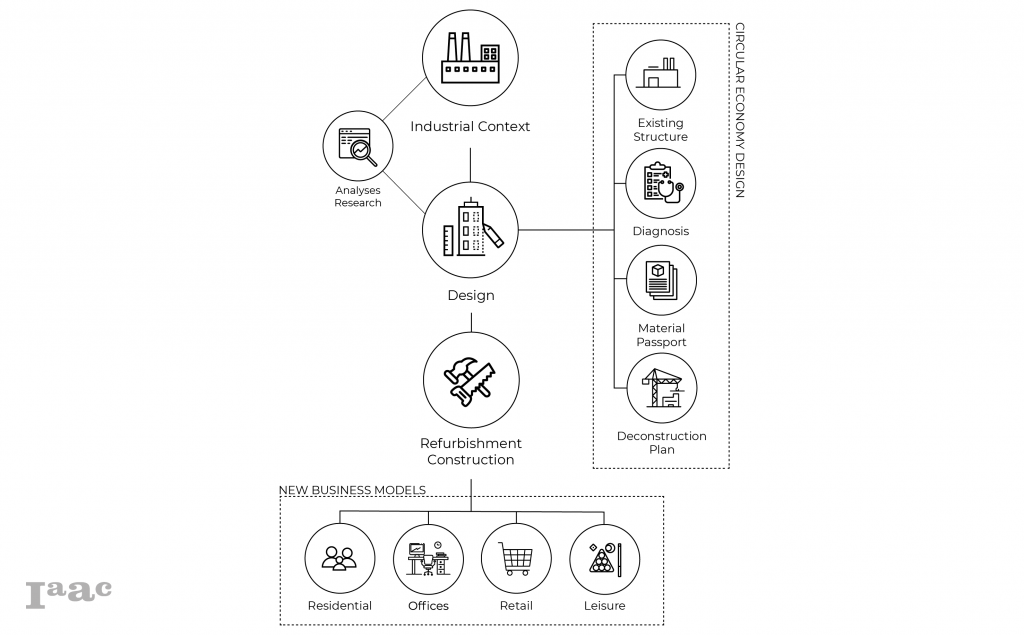
CIRCULAR ECONOMY
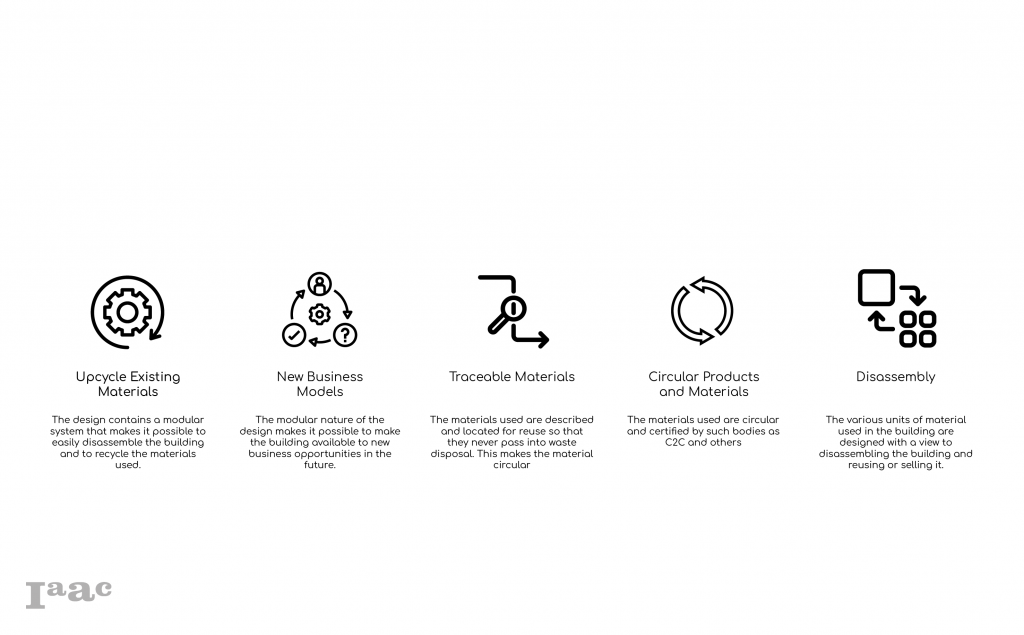
CASE STUDIES
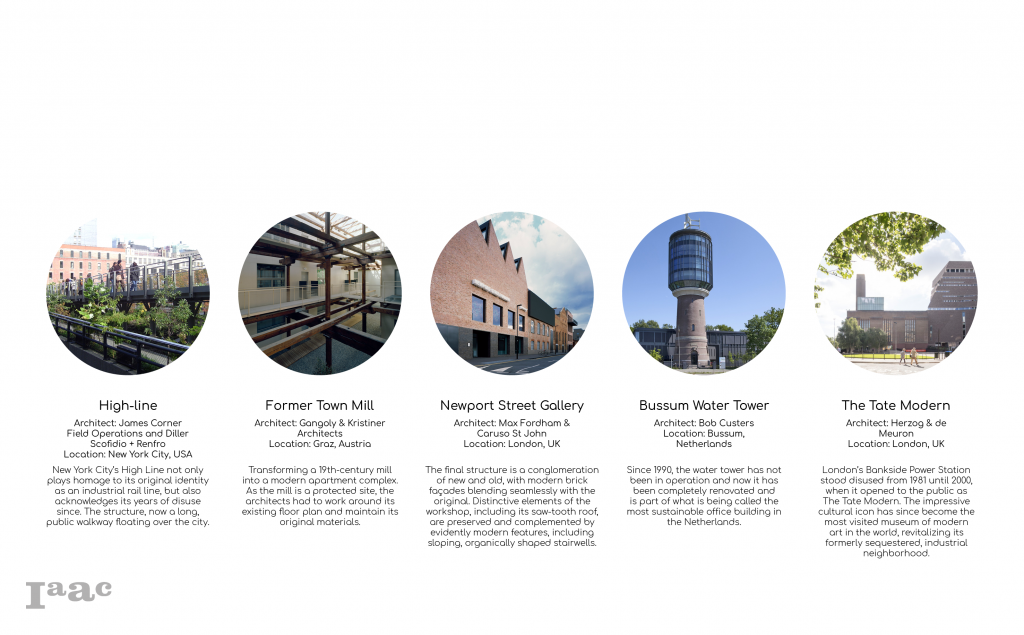
WORKFLOW
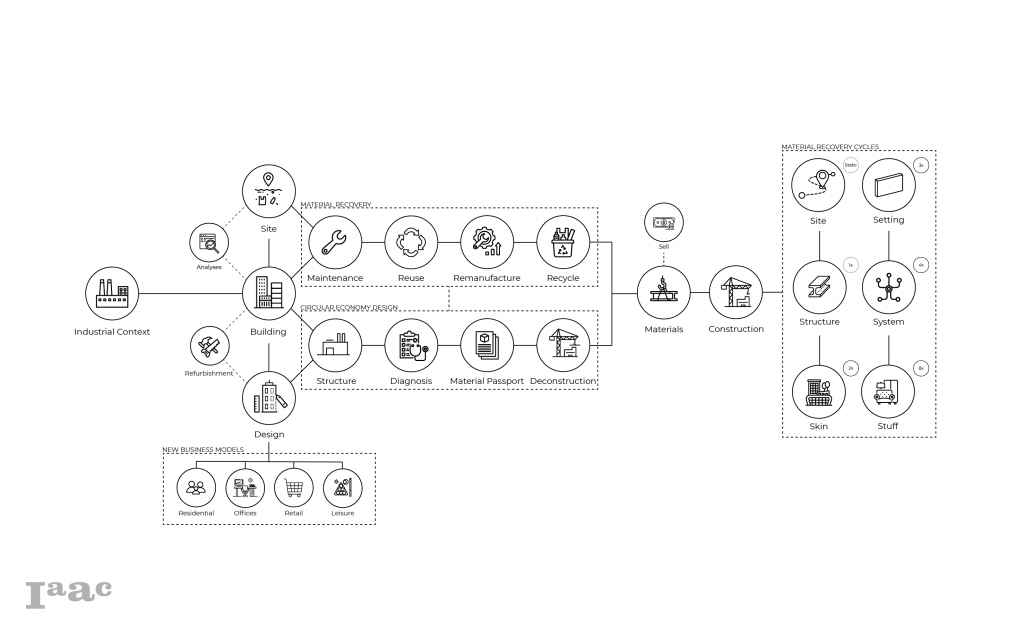
EL POBLENOU NEIGHBORHOOD
The industrial revolution in Sant Martí began in the early nineteenth century. Around 1840-50 the concentration of houses in the south of Sant Martí was called Taulat or “Pueblo Nuevo” hence the origin of the name Poblenou. During the Industrial Revolution, El Poblenou had the highest concentration of industry in Spain. A broad range of industries was represented in the neighborhood, including the production of oils, wines, textiles, metal, and machinery.
With the decline of industry, the neighborhood fell into a state of abandonment for many years. The Olympic Games in 1992 played a major role in revitalizing El Poblenou.
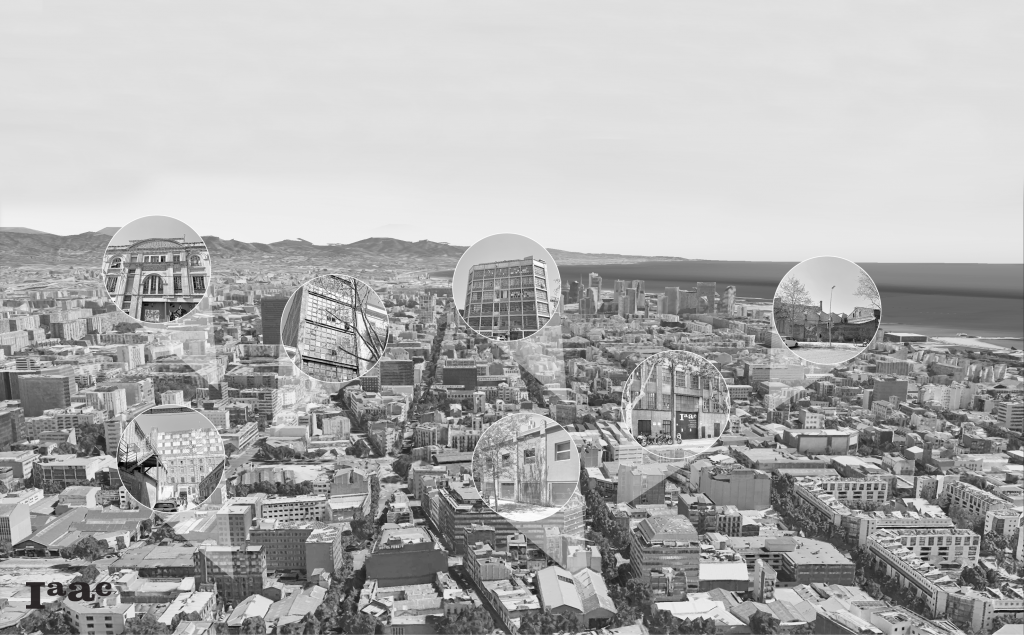
SITE CLEANING TECHNIQUES
The existing site in the industrial context has often been heavily affected by pollution of all kinds. As a result, there is a need to investigate what harmful substances are present in the soil and how they can be mediated.
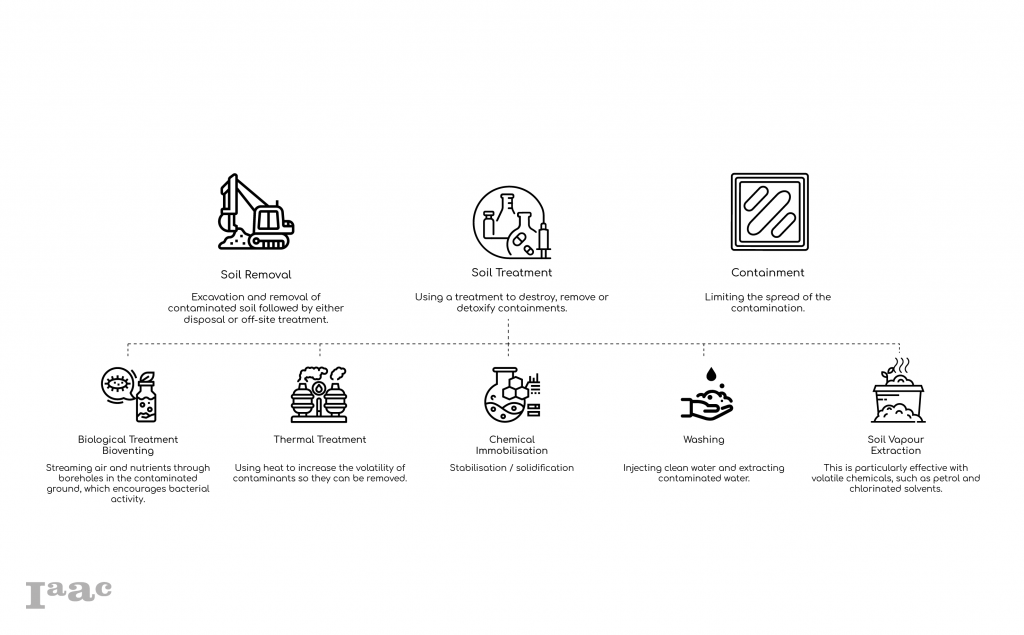
MATERIALITY
In this project, the focus is on a number of materials and construction products that are most associated with the existing industrial buildings. These materials are characteristic of the building style and the time in which they were used. The analysis carried out on these products makes it possible to apply them in a contemporary context.

MATERIAL ANALYSES
The numbers used are fictitious and serve as an estimate of the average typology. The following materials are the focus of the exercise. They
belong to the Structure, Skin, and Setting parts of the cycle.
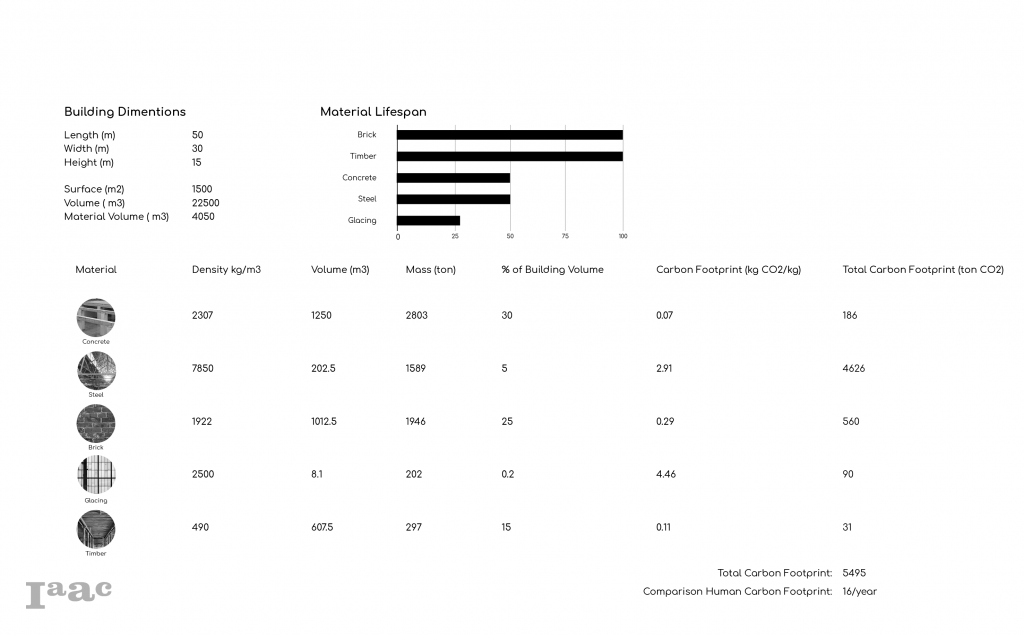
DISASSEMBLY STRATEGY
Designing a building for disassembly finds relevance in the growing concern about the construction industry’s high consumption and low reuse. Being able to disassemble a building easily with relatively little labour ensures that the building will retain its material value in the future.
The benefits of design for deconstruction include:
• Reduction of the environmental impact
• Minimising construction waste
• Minimising costs
• Helping the local economy
• Reducing transportation
• Reducing carbon impact
• Minimising pollution
• Reducing materials being taken to landfill.
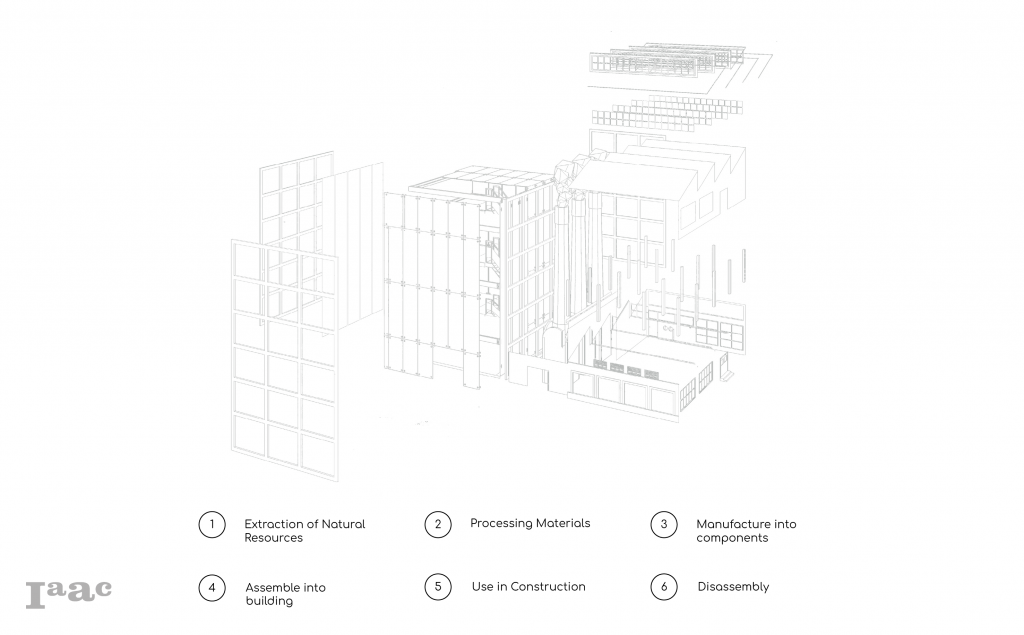
ASSEMBLY STRATEGY
The general practice for assembly with a view to disassembly is to use mechanical connections. This ensures that a building can be assembled and disassembled without damaging the material.
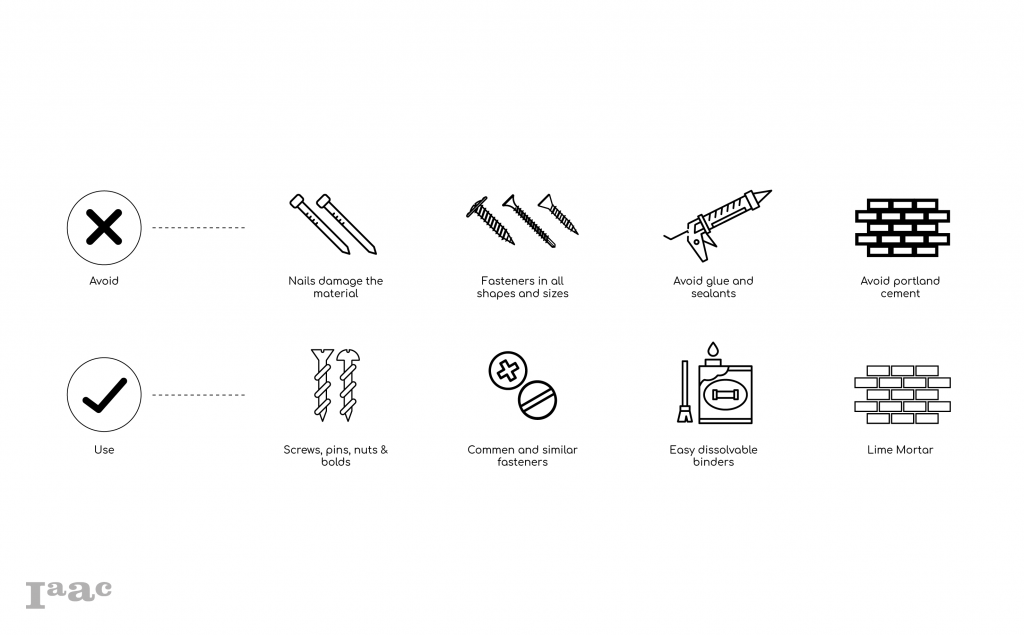
MATERIAL DISASSEMBLY
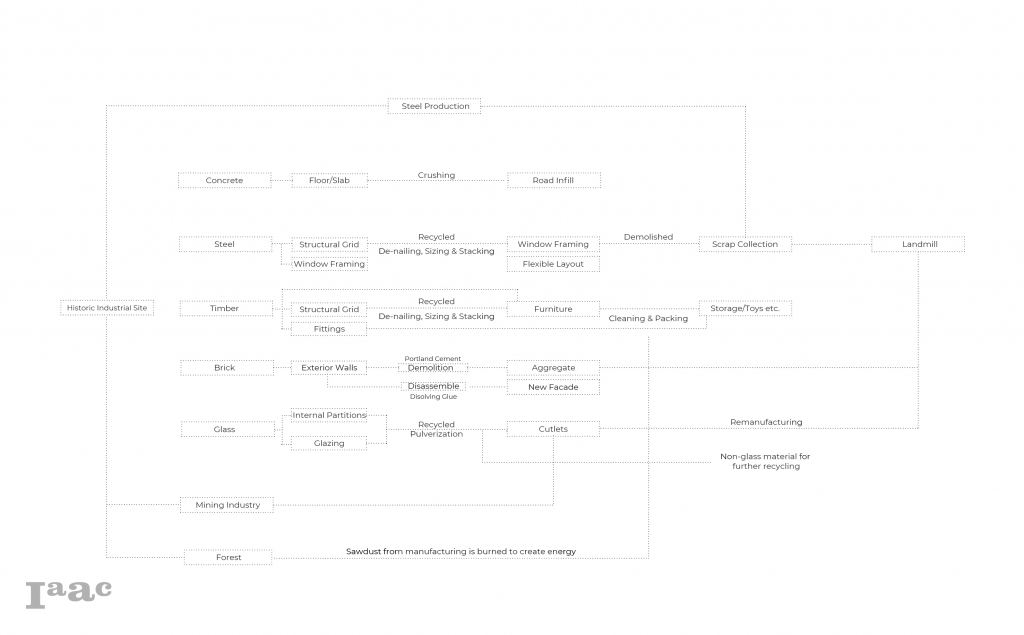
Industrial Buildings in The Urban Context // Design For The Circular Economy is a project of IAAC, Institute for Advanced Architecture of Catalonia developed in the Master in Advanced Architecture 2020/21 by Students: Alexander Dommershausen, Igwehi Inegbedion, Chirag Shah & Stefanie Eleonore Thaller, and Faculty: Ignasi Cubiñá, Ariane Lima, Sofía Battistino & María Colantoni